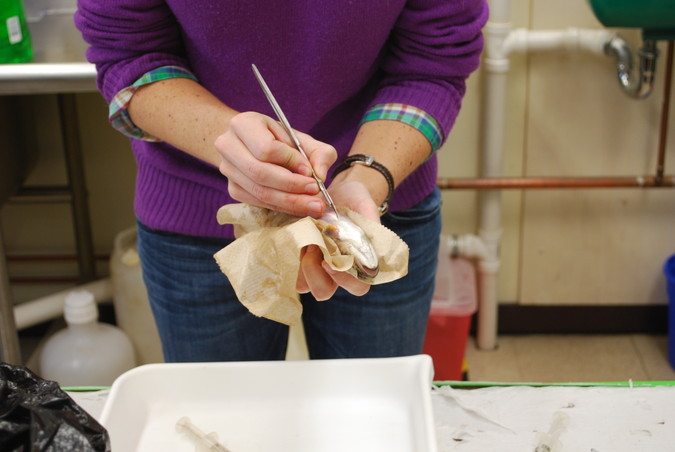The Wrack
The Wrack is the Wells Reserve blog, our collective logbook on the web.
The Wrack is the Wells Reserve blog, our collective logbook on the web.
 In his recent post, Spreading the Fish Ladder News, Jake mentioned our imminent use of passive integrated transponders, or PIT tags, to track fish. But just what is a PIT tag and exactly how does it work?
In his recent post, Spreading the Fish Ladder News, Jake mentioned our imminent use of passive integrated transponders, or PIT tags, to track fish. But just what is a PIT tag and exactly how does it work?
A passive integrated transponder is a miniature electronic circuit typically encased in glass and implanted under an animal's skin or in a body cavity (the fish tags we'll use are thin and just 12mm long). Each tag is programmed with a unique number to identify an individual animal. That number is read automatically when the animal travels close to a receiving station.
This winter, Jake and Kristin, with research assistant Tim Dubay and GIS intern Kaitlyn Perham, visited UMaine to learn how to tag fish with transponders. (That photo above is from a practice session.) Thanks to Dr. Joe Zydlewski (UMaine, USGS), his graduate student George Maynard, and UMaine employee Cory Gardner our science team is prepared to start tagging and tracking fish this spring.
A big incentive to begin PIT tagging was the restoration of the fish ladder on Branch Brook. Kristin and company are eager to learn more about individual movements by brook trout in the brook (how "sea-run" are they, really) while also improving baseline data on sea lamprey, river herring, and other migratory fish entering into this watershed through the Little River estuary.
Scanning equipment will be installed at the fish ladder soon. Fish netting and trapping — to capture fish for tagging — are already under way. We'll keep you posted.